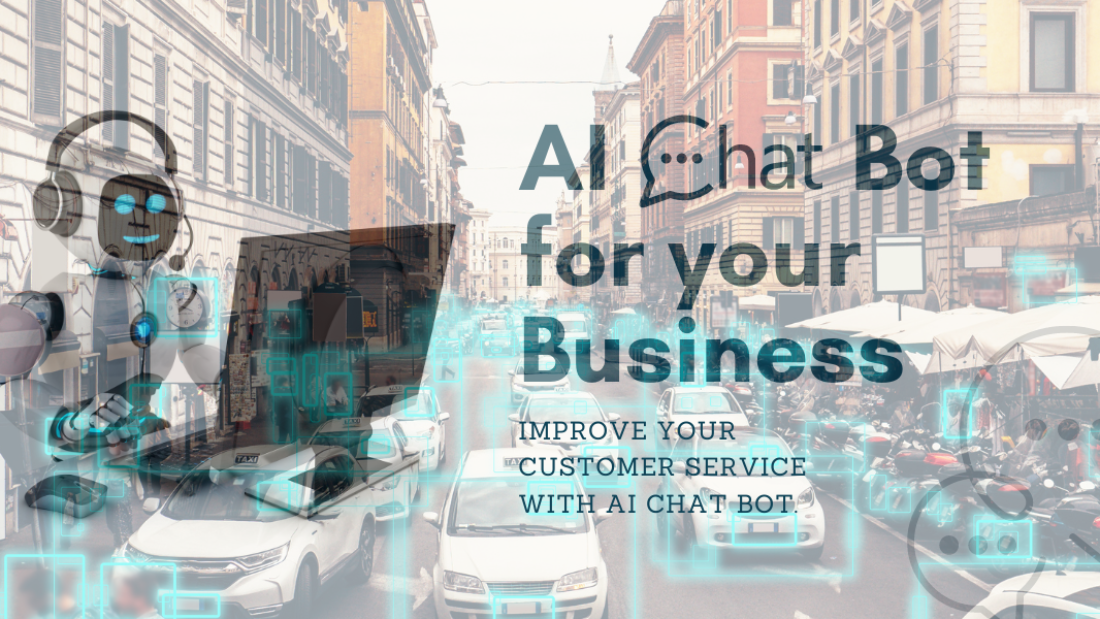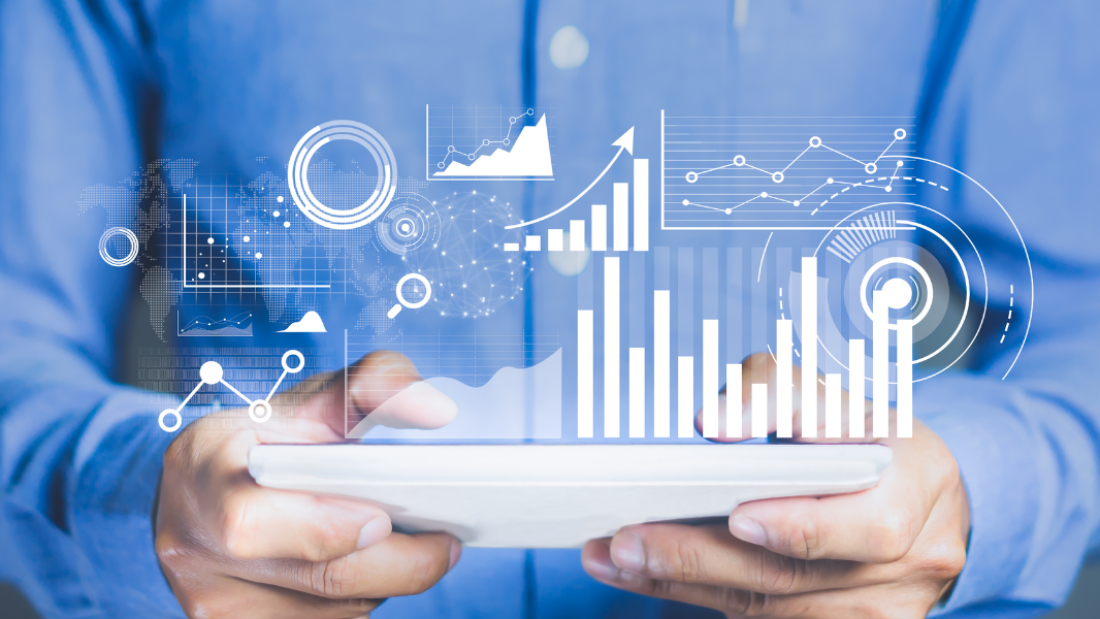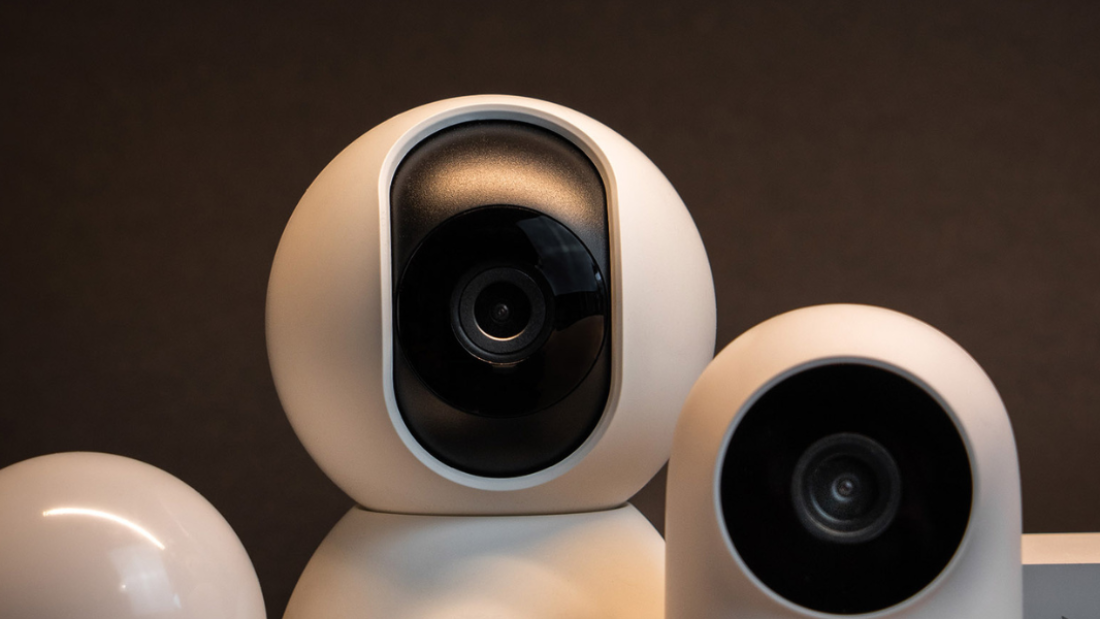In the realm of technology, AI recognition stands as a beacon of innovation and efficiency. This cutting-edge solution revolutionizes processes by swiftly identifying patterns and objects. From streamlining operations to enhancing security measures, AI recognition offers unparalleled accuracy and speed. Contrastingly, traditional methods often lag behind in precision and adaptability, highlighting the transformative power of AI technology. Embracing AI recognition opens doors to a future where tasks are executed seamlessly and errors become a relic of the past. Stay ahead of the curve with AI recognition’s unmatched capabilities.
Understanding AI Recognition Edge
Definition
AI recognition, also known as image recognition AI, is a technology that enables machines to interpret and understand visual data. By leveraging complex algorithms and machine learning models, AI image recognition systems can identify objects, people, text, and scenes in images or videos.
AI recognition plays a crucial role in enhancing technology across various sectors by providing advanced image analysis capabilities. This technology powers applications such as facial recognition, autonomous vehicles, medical imaging diagnostics, and quality control in manufacturing processes.
Advantages
Enhanced Efficiency: AI recognition streamlines processes by automating tasks that would otherwise require human intervention. This leads to faster decision-making and improved productivity.
Increased Accuracy: By utilizing AI image recognition software, businesses can achieve higher levels of accuracy in tasks like visual inspections, object detection, and data classification.
Impact on Data Processing
Integrating AI recognition into different sectors results in significant improvements in data processing efficiency and accuracy. For instance, in the healthcare industry, Google Vision AI is utilized for medical imaging analysis, aiding doctors in diagnosing conditions accurately and swiftly.
In the retail sector, companies leverage TensorFlow object recognition API to enhance customer experiences through personalized recommendations based on visual data analysis. This not only boosts sales but also improves customer satisfaction.
Moreover, industries like manufacturing benefit from AI image recognition technology for quality control purposes. By implementing visual inspection AI, manufacturers can identify defects in products with precision, reducing errors and minimizing production costs.
Importance of Edge Computing
Edge computing plays a vital role in AI recognition by enabling real-time processing of data closer to the source. This reduces latency and enhances the speed of decision-making processes. Companies leverage edge computing to deploy AI models directly on devices like cameras or sensors for instant analysis without relying on cloud resources.
The Shift to Smart Retail
Evolution
Retail has evolved significantly from traditional brick-and-mortar stores to smart retail environments. In the past, customers had limited shopping options and relied on physical stores for their purchases. However, with the rise of ecommerce, the retail landscape has transformed.
The convenience and accessibility offered by ecommerce platforms have revolutionized the way people shop, leading to a shift in consumer preferences. Online shopping provides customers with a wide range of products, competitive prices, and the flexibility to shop anytime, anywhere. As a result, traditional retailers have been compelled to adapt to this changing landscape by integrating digital technologies into their operations.
Technologies
One of the key technologies driving the transition to smart retail is vision AI. This cutting-edge technology enables retailers to enhance customer experiences by providing personalized recommendations, streamlining checkout processes, and optimizing inventory management. By leveraging vision AI, retailers can analyze customer behavior, track foot traffic within stores, and improve operational efficiency.
The integration of vision AI in smart retail solutions allows retailers to implement innovative features such as cashier-less checkout systems and interactive displays. These advancements not only enhance the overall shopping experience but also enable retailers to gain valuable insights into consumer preferences and behavior patterns.
Consumer Behavior
The shift towards smart retail solutions is further fueled by changes in consumer behavior. Modern consumers are increasingly tech-savvy and expect seamless shopping experiences across both online and offline channels. They value personalized recommendations, instant gratification, and efficient service delivery.
Moreover, the proliferation of mobile devices has empowered consumers to research products, compare prices, and make informed purchasing decisions on-the-go. As a result, retailers are under pressure to adopt technologies that cater to these evolving consumer preferences and deliver frictionless shopping experiences.
Key Features for Retail
AI Recognition Features
Product Search: AI recognition enables efficient product search within specific categories, enhancing the overall shopping experience. Vision Detection Features: These features allow for quick and accurate identification of products through image recognition technology. Optical Character Recognition: Enhances the ability to extract text from images, providing detailed information about products.
Importance of Real-Time Analytics
Real-time analytics in retail settings offer instant insights into customer behaviors, allowing businesses to make data-driven decisions promptly. By analyzing customer interactions and purchase patterns in real-time, retailers can adjust strategies to meet evolving demands swiftly.
Personalization Impact on Shopping Habits
AI recognition facilitates personalized shopping experiences by recommending products based on individual preferences and past purchases. This personalized approach can significantly influence shopping habits, leading to increased customer satisfaction and loyalty.
Gaining Customer Insights
Collecting and Interpreting Customer Data
AI recognition plays a crucial role in collecting and interpreting customer data through advanced algorithms. By analyzing customer activity and behavior, businesses can gain valuable insights into their preferences and purchase patterns. This process involves learning from vast amounts of data to understand customers better.
Utilizing deep learning techniques, AI recognition systems can extract meaningful information from digital content like images and videos. This enables businesses to gather information about customers’ interactions with products and services. Through scene understanding and activity recognition, AI can provide detailed insights into customer engagement.
Pros: Efficient data collection, enhanced understanding of customer behavior.
Cons: Potential privacy concerns, data security risks.
Impact on Inventory Management
The insights derived from AI recognition have a significant impact on inventory management within retail businesses. By analyzing customer data, companies can optimize their inventory levels based on demand forecasting. This ensures that the right products are available at the right time, minimizing stockouts and overstock situations.
Moreover, AI-powered systems can identify trends in customer preferences, allowing businesses to adjust their inventory accordingly. This proactive approach helps in reducing excess inventory and improving overall inventory turnover rates. As a result, businesses can enhance operational efficiency and reduce costs associated with inventory management.
Leveraging Insights for Marketing Strategies
Businesses can leverage customer insights obtained through AI recognition to tailor their marketing strategies effectively. By understanding customers’ preferences and behavior, companies can create targeted marketing campaigns that resonate with their target audience. This personalized approach increases the likelihood of attracting new customers and retaining existing ones.
AI enables businesses to analyze customer feedback and sentiment towards their products or services. By incorporating this feedback into marketing strategies, companies can address customer concerns proactively and improve overall customer satisfaction. This iterative process of collecting insights and refining marketing strategies leads to a competitive advantage in the market.
Enhanced targeting of marketing campaigns
Improved customer retention rates
Boosting Sales and Revenue
Streamlining Checkout Processes
AI recognition in products can significantly streamline checkout processes by tracking and recognizing products quickly. By implementing AI-driven systems, businesses can enhance the efficiency of their checkout procedures, reducing waiting times for customers. This streamlined process leads to quick and convenient transactions, improving overall customer satisfaction.
Implementing AI recognition technology in enterprise settings allows for personalized product recommendations based on individual preferences. By analyzing customer behavior and purchase history, businesses can provide tailored suggestions, leading to increased sales. The correlation between AI-driven recommendations and improved sales is evident in the higher conversion rates resulting from personalized suggestions.
Optimizing Pricing Strategies
AI plays a crucial role in optimizing pricing strategies for better revenue generation. Through pricing analysis and market trends, AI algorithms can suggest competitive pricing models that attract more customers while maximizing profits. By leveraging AI technology for dynamic pricing, businesses can adjust prices in real-time based on demand and competitor pricing, ensuring optimal revenue generation.
Utilizing AI for pricing strategies also enables businesses to implement discounted pricing and promotional offers effectively. By analyzing customer behavior and purchase patterns, AI systems can identify the most suitable times to offer discounts or promotions, driving sales and revenue growth. This targeted approach to pricing adjustments enhances customer engagement and loyalty, leading to sustainable revenue streams.
Enhancing Customer Experience
AI recognition enhances the overall customer experience by providing customized services and personalized interactions. By utilizing AI-powered systems for image recognition and editing, businesses can offer unique services such as customized quotes or personalized product recommendations. These tailored experiences create a sense of exclusivity for customers, driving brand loyalty and repeat purchases.
Incorporating AI technologies like imagen recognition into business operations allows for innovative solutions that cater to evolving customer needs. By offering free credits or trials for AI-powered services, businesses can attract new customers and demonstrate the value of their offerings. This approach not only boosts initial sales but also fosters long-term relationships with customers through continuous engagement.
Real-World Applications
Retail Success Stories
Retailers have embraced AI recognition to enhance customer experiences and streamline operations. Companies like Amazon and Sephora utilize AI-powered image recognition for virtual try-on features, improving customer engagement and boosting sales.
Implementing AI recognition in retail has led to increased conversion rates and reduced return rates. By providing personalized recommendations based on customer preferences, retailers can build brand loyalty and drive repeat purchases.
Diverse Industry Applications
AI recognition technology extends beyond retail, benefiting industries like healthcare and security. In healthcare, AI-powered image analysis aids in diagnosing diseases and monitoring patient conditions accurately.
Security companies leverage AI recognition for facial recognition systems, enhancing surveillance and access control. This technology has revolutionized security measures by providing real-time identification of individuals in high-traffic areas.
Versatility Across Business Models
The versatility of AI recognition applications transcends various business models, from e-commerce to manufacturing. In e-commerce, AI-powered recommendation engines analyze user behavior to suggest personalized products, increasing customer satisfaction and retention.
Manufacturers integrate AI recognition for quality control purposes, detecting defects in products with precision. By automating inspection processes, manufacturers improve product quality and reduce operational costs significantly.
Addressing Challenges
Technical Hurdles
AI recognition technology faces challenges in labeling and categorization. Ensuring accurate entity identification is crucial for effective AI solutions.
Retailers often encounter difficulties in text detection and image labeling. These tasks require precise algorithms to provide relevant descriptions.
Solutions for Technical Issues
To overcome these obstacles, retailers can implement advanced AI models with enhanced identification capabilities. Utilizing sophisticated algorithms improves accuracy in description and categorization tasks.
Implementing AI-powered tools for face detection and recognition enhances the overall customer experience. These solutions streamline processes and enable efficient identification of products.
Addressing Consumer Skepticism
Consumer skepticism towards AI recognition technology stems from concerns about privacy and data security. Providing transparent information about data usage can help build trust.
Educating consumers on the benefits of AI recognition, such as personalized recommendations, can alleviate skepticism. Demonstrating the technology’s ability to enhance shopping experiences can increase acceptance.
Retailers must prioritize addressing consumer concerns to build confidence in AI recognition technologies.
Transparency regarding data handling practices is essential to mitigate consumer skepticism effectively.
Ensuring Privacy and Security
Data Protection
AI recognition systems play a crucial role in privacy and security by handling sensitive information like scanned documents and content moderation. To ensure complete control over data, it’s essential to prioritize safe search settings and implement robust computer vision infrastructure.
Maintaining customer trust involves safeguarding their personal information through stringent measures like document OCR for accurate data extraction. By giving users the ability to manage their settings and filter out explicit content, AI recognition platforms empower individuals to protect their privacy effectively.
Regulations and Compliance
Compliance with data protection regulations such as GDPR is vital for AI recognition platforms to operate ethically. Implementing access controls and regular security audits helps in upholding legal standards and preventing unauthorized access to sensitive information.
To enhance security, organizations should conduct regular assessments of their computer vision services to identify vulnerabilities and address them promptly. By ensuring that all details are encrypted and secure, companies can build a strong foundation for data protection and regulatory compliance.
Building Customer Trust
Building trust with customers requires transparent communication about how their data is used within AI recognition systems. Providing users with clear information on how their input is processed and giving them the option to check what data is collected fosters a sense of transparency and accountability.
Empowering users to customize their privacy preferences and offering them granular control over the information shared instills confidence in the platform’s commitment to data security. By prioritizing user privacy and actively involving them in the decision-making process, AI recognition systems can establish long-term trust with their audience.
Future Trends in Smart Retail
Advancements in AI Recognition
AI recognition technology is poised to revolutionize the retail industry. In the near future, we can expect enhanced facial recognition systems that personalize shopping experiences based on customer preferences. These advancements will enable seamless transactions and targeted marketing strategies.
Integration with Emerging Technologies
The integration of AI recognition with other emerging technologies such as Internet of Things (IoT) and Augmented Reality (AR) will create a dynamic shopping environment. Imagine a scenario where smart mirrors use AI to recommend outfits based on past purchases and current trends, providing customers with a personalized shopping experience.
Shaping Consumer Expectations
As AI recognition technology evolves, consumer expectations will play a crucial role in shaping the future of smart retail experiences. Customers are increasingly seeking convenience and personalization in their shopping journeys. AI-driven solutions can anticipate customer needs, leading to more efficient and tailored interactions.
Prospective Benefits:
Enhanced personalized shopping experiences
Improved efficiency in transactions
Targeted marketing strategies
Final Remarks
In the fast-paced world of retail, AI recognition at the edge is revolutionizing the way businesses interact with customers. By harnessing the power of AI technology, you can gain valuable insights into customer behavior, enhance personalized shopping experiences, and ultimately drive sales and revenue. As you navigate the landscape of smart retail, remember to prioritize privacy and security measures to build trust with your customers and safeguard their data.
Embrace the future trends in smart retail by staying informed and adapting to new technologies. By leveraging AI recognition tools effectively, you can set your business apart from the competition and create meaningful connections with your customers. Take charge of your retail strategy today and unlock the full potential of AI recognition for a successful and thriving business.
Frequently Asked Questions
What is AI Recognition Edge?
AI Recognition Edge refers to the technology that enables artificial intelligence systems to process data directly on a device without relying on a network connection. This allows for real-time analysis and decision-making, making it ideal for applications requiring quick responses.
How can Smart Retail benefit from AI Recognition?
Smart Retail can leverage AI Recognition for tasks like customer behavior analysis, inventory management, personalized marketing, and security monitoring. By utilizing AI Recognition technology, retailers can enhance operational efficiency, improve customer experiences, and boost sales.
What are the Key Features of AI Recognition in Retail?
Key features of AI Recognition in retail include facial recognition for personalized customer interactions, object detection for inventory tracking, anomaly detection for security purposes, and data analytics for insights generation. These features help retailers streamline operations and offer tailored services to customers.
How does AI Recognition contribute to boosting Sales and Revenue in Retail?
AI Recognition contributes to boosting sales and revenue in retail by enabling targeted marketing campaigns based on customer preferences, optimizing product placements through data-driven insights, reducing theft through security monitoring, and enhancing overall customer satisfaction leading to repeat business.
What are some Real-World Applications of AI Recognition in Retail?
Real-world applications of AI Recognition in retail include cashier-less stores using facial recognition for payments, smart shelves that automatically track inventory levels, personalized recommendations based on past purchases, and foot traffic analysis for store layout optimization. These applications showcase the versatility and impact of AI Recognition technology in the retail sector.









